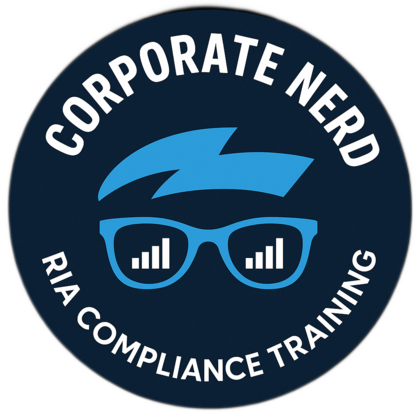Artificial intelligence (AI) and automation are reshaping investment management, offering unprecedented efficiencies and data-driven insights. Robo-advisors—AI-powered platforms that deliver automated portfolio management—have expanded rapidly, democratizing access to financial advice. Yet, alongside these advancements, the regulatory and compliance landscape is becoming more complex.
At Corporate Nerd, we believe firms must proactively address these challenges to protect clients and maintain regulatory adherence. This month, we explore how AI is transforming investment advising and the evolving compliance expectations.
The Rise of AI and Robo-Advisory Services
AI technology underpins many aspects of modern investment management, from portfolio optimization to risk modeling and algorithmic trading. Robo-advisors like Betterment, Wealthfront, and Vanguard Personal Advisor Services have leveraged AI to offer scalable, low-cost investment solutions with minimal human intervention.
According to Business Insider, robo-advisory platforms are expected to manage over $2.4 trillion in assets globally by 2025, a testament to their growing role in the financial services industry.
However, the rise of AI introduces regulatory risks. The “black box” nature of AI models—where decision-making processes are difficult to interpret—raises concerns around transparency, suitability, and fiduciary responsibilities.
Regulatory Frameworks Governing AI-Driven Advisers
AI-driven investment advisers must comply with the same fiduciary duties as traditional human advisers under the Investment Advisers Act of 1940. This includes acting in the client’s best interests, ensuring full and fair disclosure of material information, and safeguarding client data.
Several key regulatory touchpoints include:
- SEC’s 2017 Guidance on Digital Investment Advice, emphasizing the need for transparency around algorithms and client disclosures.
- FINRA’s 2016 Report on Digital Investment Advice, urging rigorous algorithm testing, model validation, and compliance with Regulation Best Interest (Reg BI).
- Cybersecurity Regulations, such as the SEC’s Safeguards Rule and the California Consumer Privacy Act (CCPA), requiring firms to protect sensitive client data.
Regulators have stressed that technology does not diminish regulatory expectations; rather, it elevates them.
Common Compliance Risks
Recent SEC enforcement actions highlight major compliance pitfalls for AI-driven investment firms:
- SEC v. Wealthfront: Wealthfront was charged with misleading clients about its tax-loss harvesting strategies and improperly promoting client testimonials.
- SEC v. Hedgeable: Hedgeable misrepresented the performance of its AI-driven portfolios compared to competitors, failing to provide fair and accurate comparisons.
- SEC v. Titan Global Capital Management: Titan exaggerated the capabilities of its AI model without disclosing critical assumptions and limitations.
These cases illustrate the SEC’s focus on ensuring that AI-driven investment advice remains transparent, unbiased, and aligned with investor protection principles.
Best Practices for Compliance
Investment firms utilizing AI should prioritize the following best practices:
- Establish AI Governance: Formalize oversight structures for AI development, implementation, and monitoring.
- Ensure Transparency: Provide clear, comprehensible disclosures explaining how AI-generated recommendations are produced.
- Mitigate Conflicts of Interest: Audit algorithms regularly to detect and eliminate biases favoring proprietary or affiliated investment products.
- Enhance Cybersecurity: Protect client data through encryption, multi-factor authentication, and regular security audits.
- Validate and Monitor AI Models: Conduct periodic backtesting and risk assessments to ensure AI models perform as intended under different market conditions.
Implementing these measures is critical not only for compliance but also for building trust with clients in a technology-driven advisory environment.
Looking Ahead: The Future of AI Regulation
The SEC and FINRA have both indicated that AI in investment management will be a key focus of future regulatory efforts. Anticipated developments may include:
- Stricter explainability requirements for AI-driven recommendations.
- Mandatory bias testing and algorithm audits to ensure fairness.
- Expanded cybersecurity mandates to protect against AI-enabled fraud.
- Increased scrutiny of AI-driven trading strategies and systemic market risks.
Investment firms that embrace proactive AI governance and compliance frameworks will be best positioned to navigate this evolving regulatory environment while leveraging the benefits of AI innovation.
References
- Business Insider. (2023). The Robo-Advisory Market Report.
- U.S. Securities and Exchange Commission (SEC). (2017). Guidance Update: Robo-Advisers.
- Financial Industry Regulatory Authority (FINRA). (2016). Report on Digital Investment Advice.
- SEC Enforcement Action: In the Matter of Wealthfront Advisers LLC (2018).
- SEC Enforcement Action: In the Matter of Hedgeable, Inc. (2019).
- SEC Enforcement Action: In the Matter of Titan Global Capital Management USA LLC (2023).
- Investment Advisers Act of 1940, 15 U.S.C. § 80b-1 et seq.
- California Consumer Privacy Act (CCPA), Cal. Civ. Code § 1798.100 et seq.












